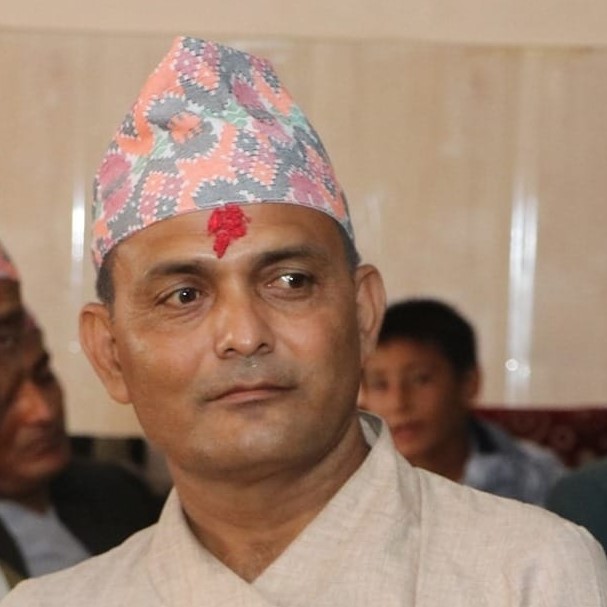Money
Paddy farmers boost yield by using System of Rice Intensification
Average productivity soared to 7 tonnes per hectare in Morang, compared to the national average of less than 4 tonnes, officials say.
Binod Bhandari
Paddy farmers in Province 1 are using a low-water and labour-intensive growing method called System of Rice Intensification (SRI) in a bid to increase yield.
The seedlings are transplanted individually in a widely spaced pattern as opposed to the traditional method of planting them in clumps.
The rice seeds are transplanted when they are much younger than usual, using different amounts of water at critical times of their growth cycle, and improving soil conditions with organic manure.
The system is more labour-intensive, but has generated extraordinary results, according to experts. The SRI method of growing crops was developed over 30 years by small farmers in more than 20 countries.
In Nepal, only a few farmers in Morang, Sunsari and Jhapa districts in the eastern part of the country have been adopting this system for decades.
The SRI method has been widely adopted in India, China, Indonesia, Cambodia, Thailand and Vietnam.
Rajendra Upreti, spokesperson for the Ministry of Land Management, Agriculture and Cooperative of Province 1, said India reported a record yield of nearly 24 tonnes of paddy rice per hectare using SRI.
A decade ago, Upreti said he introduced the system in Nepal after reading a news article about the SRI method published in a magazine in the Netherlands. He then wrote to Norman Uphoff, a professor at Cornell University in the United States, explaining the technology in detail.
Upreti had then piloted it in Bahuni of Morang with a handful of seeds using the technology.
Nepal’s average paddy productivity is less than 4 tonnes per hectare, according to the Ministry of Agriculture and Livestock Development. The average yield, after adopting the SRI in Morang, was 7 tonnes. The maximum yield reported was 12 tonnes per hectare. In Morang, more than 500 farmers have been planting paddy with this technology.
Upreti said that the ministry was working to promote this system more widely. Upreti, who holds a master's degree in SRI technology from the University of Wageningen in the Netherlands, was also awarded a scholarship by the university when he presented a report on the technology at the Second World Paddy Conference in New Delhi, India, a decade ago.
At first, he was afraid while requesting farmers to adopt this method. “Many farmers called me crazy. But they were surprised when they saw the yield,” Upreti told the Post.
Within eight to 12 days of sowing in low-water soil, only one of the three-leafed saplings should be planted at a spacing of about 25 cm. A sapling produces at least 80 new plants.
He says that when four to five saplings are planted as is traditionally done, they produce 15 new plants each.
The technology was invented in Madagascar in 1983. Indonesia, Cambodia, China, India, Thailand and Vietnam have been adopting this technology since 1997 after producing 9 tonnes of paddy per hectare.
When sowing paddy with traditional technology, 50-60 kg of paddy seedlings are required for 1 bigha of land, but when sowing with SRI technology, 5 kg of paddy saplings are enough for the same amount of land.
Despite the increased cost of weeding the paddy field, it costs less to plant paddy using the technology compared to traditional technology.
Traditionally, the cost of producing 1 kg of paddy ranges from Rs7-10, but under the SRI method, it costs Rs1.91 to Rs2.74 per kg.
According to Upreti, the production cost using the traditional farming system comes to Rs24,900 per hectare. The total income per hectare is Rs32,000, giving farmers a net income of Rs7,000 per hectare.
But various research and trials have shown that planting paddy under the SRI method enables farmers to earn Rs62,700 per hectare, Upreti said. Deducting the production cost of Rs23,200 per hectare, farmers take home a net income of Rs39,500 per hectare.
This method is more effective in the hills and other lands that do not hold water for a long period. When planting paddy under the SRI method, the field should not be flooded but the soil should be kept moist.
When water is stored in the paddy field, the roots of the sapling do not spread, and when the soil is kept moist, only the roots of the sapling spread, he said. “But the only disadvantage of this method is that it will cost more to weed the field without water stored on the land.”
According to Upreti, if the government makes this technology mandatory for all farmers in the lowlands and hills like Indonesia, it will boost national food security with increased productivity.
Nepal’s paddy production reached a record high for the fourth straight year in 2020 due to good monsoon rains and an abundant supply of farmhands, even though a severe shortage of chemical fertiliser during transplantation and top dressing caused distress among farmers.
According to the Ministry of Agriculture and Livestock Development, Nepali farmers harvested 5.62 million tonnes of paddy, up by a marginal 1.28 percent compared to last year. The national average paddy productivity grew 0.28 percent to 3.82 tonnes per hectare.




 8.12°C Kathmandu
8.12°C Kathmandu














